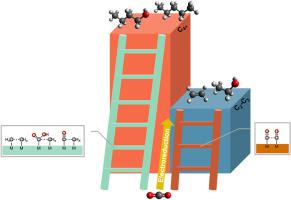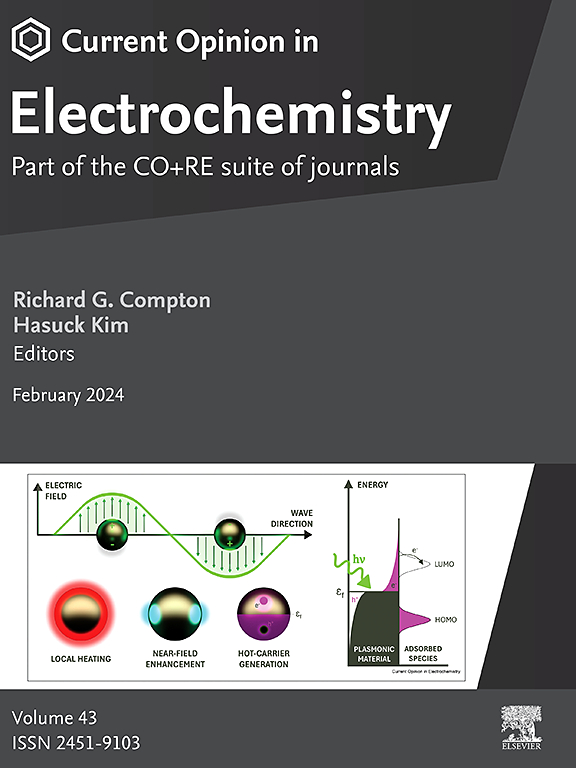Electrocatalytic reduction of carbon dioxide to C4+ products
IF 7.9
2区 化学
Q1 CHEMISTRY, PHYSICAL
引用次数: 0
Abstract
Long-chain hydrocarbons and oxygenates are used as fuels as well as in many daily applications. The majority of these molecules are derived from fossil fuels, which is a non-renewable commodity. The electrocatalytic CO2 reduction reaction (eCO2RR) has been recently found promising in producing C4+ molecules. Herein, we summarize recent works on this topic. The design of C4+-producing catalysts is compared with those that produce C1–C3 products. Mechanisms for the C–C coupling step are reviewed.


电催化将二氧化碳还原为 C4+ 产物
长链碳氢化合物和含氧化合物被用作燃料以及许多日常应用。这些分子大部分来自化石燃料,而化石燃料是不可再生资源。最近,人们发现电催化二氧化碳还原反应(eCO2RR)在生产 C4+ 分子方面大有可为。在此,我们总结了有关这一主题的最新研究成果。我们将 C4+ 生成催化剂的设计与 C1-C3 生成催化剂的设计进行了比较。并对 C-C 偶联步骤的机理进行了综述。
本文章由计算机程序翻译,如有差异,请以英文原文为准。
求助全文
约1分钟内获得全文
求助全文
来源期刊

Current Opinion in Electrochemistry
Chemistry-Analytical Chemistry
CiteScore
14.00
自引率
5.90%
发文量
272
审稿时长
73 days
期刊介绍:
The development of the Current Opinion journals stemmed from the acknowledgment of the growing challenge for specialists to stay abreast of the expanding volume of information within their field. In Current Opinion in Electrochemistry, they help the reader by providing in a systematic manner:
1.The views of experts on current advances in electrochemistry in a clear and readable form.
2.Evaluations of the most interesting papers, annotated by experts, from the great wealth of original publications.
In the realm of electrochemistry, the subject is divided into 12 themed sections, with each section undergoing an annual review cycle:
• Bioelectrochemistry • Electrocatalysis • Electrochemical Materials and Engineering • Energy Storage: Batteries and Supercapacitors • Energy Transformation • Environmental Electrochemistry • Fundamental & Theoretical Electrochemistry • Innovative Methods in Electrochemistry • Organic & Molecular Electrochemistry • Physical & Nano-Electrochemistry • Sensors & Bio-sensors •
 求助内容:
求助内容: 应助结果提醒方式:
应助结果提醒方式:


